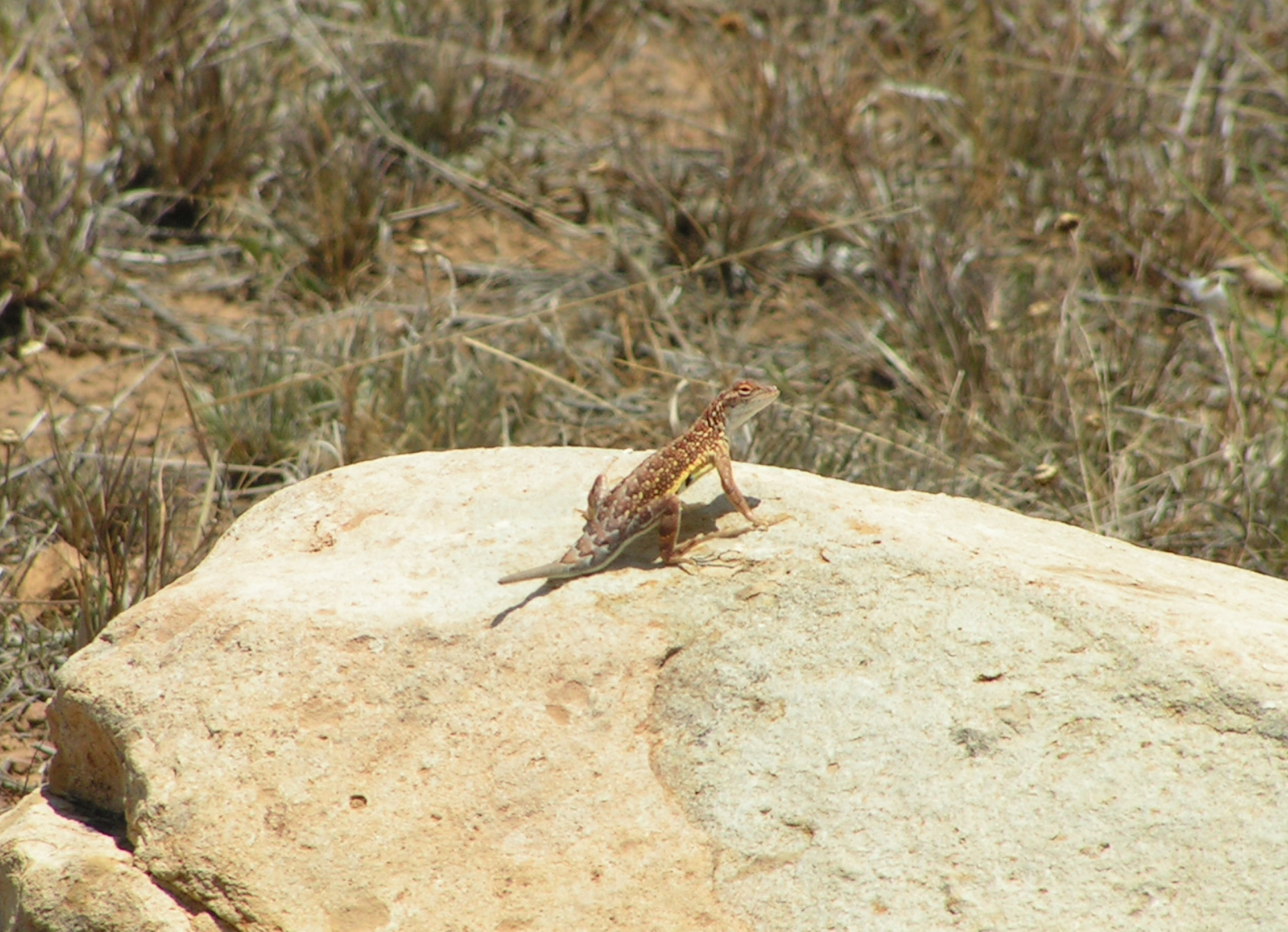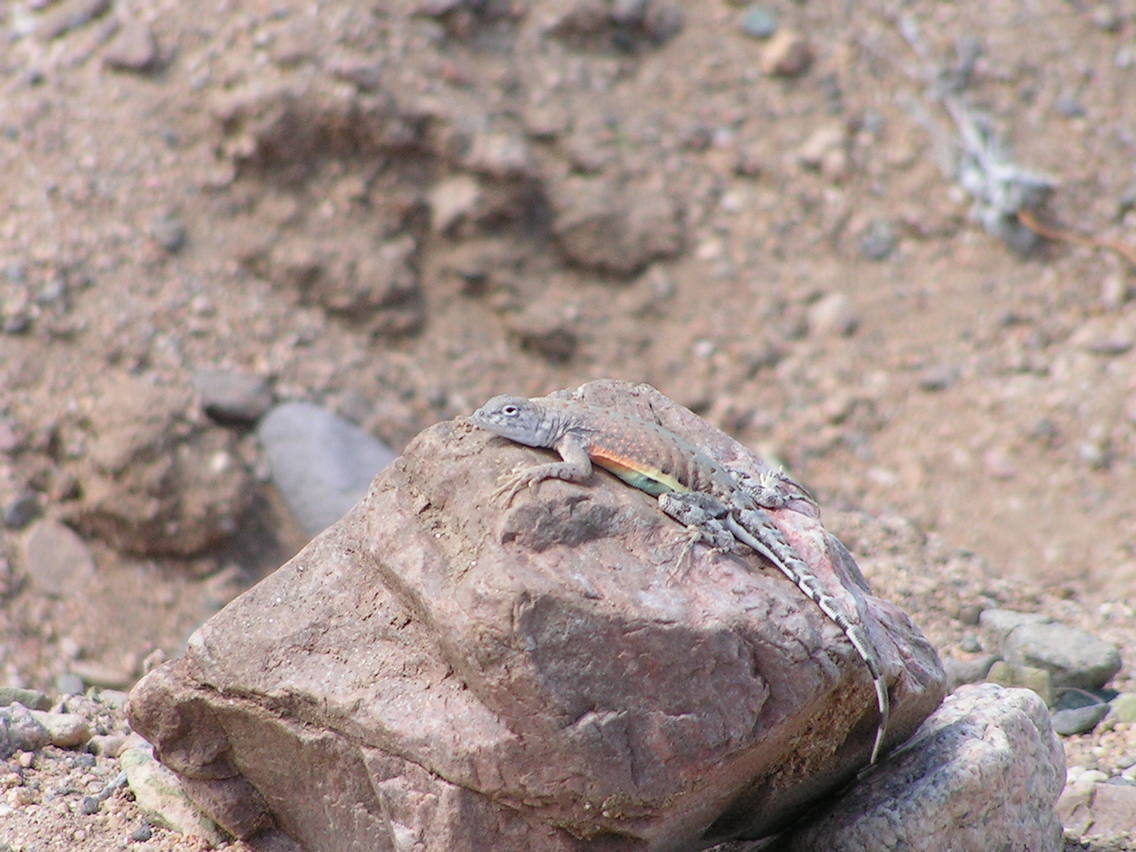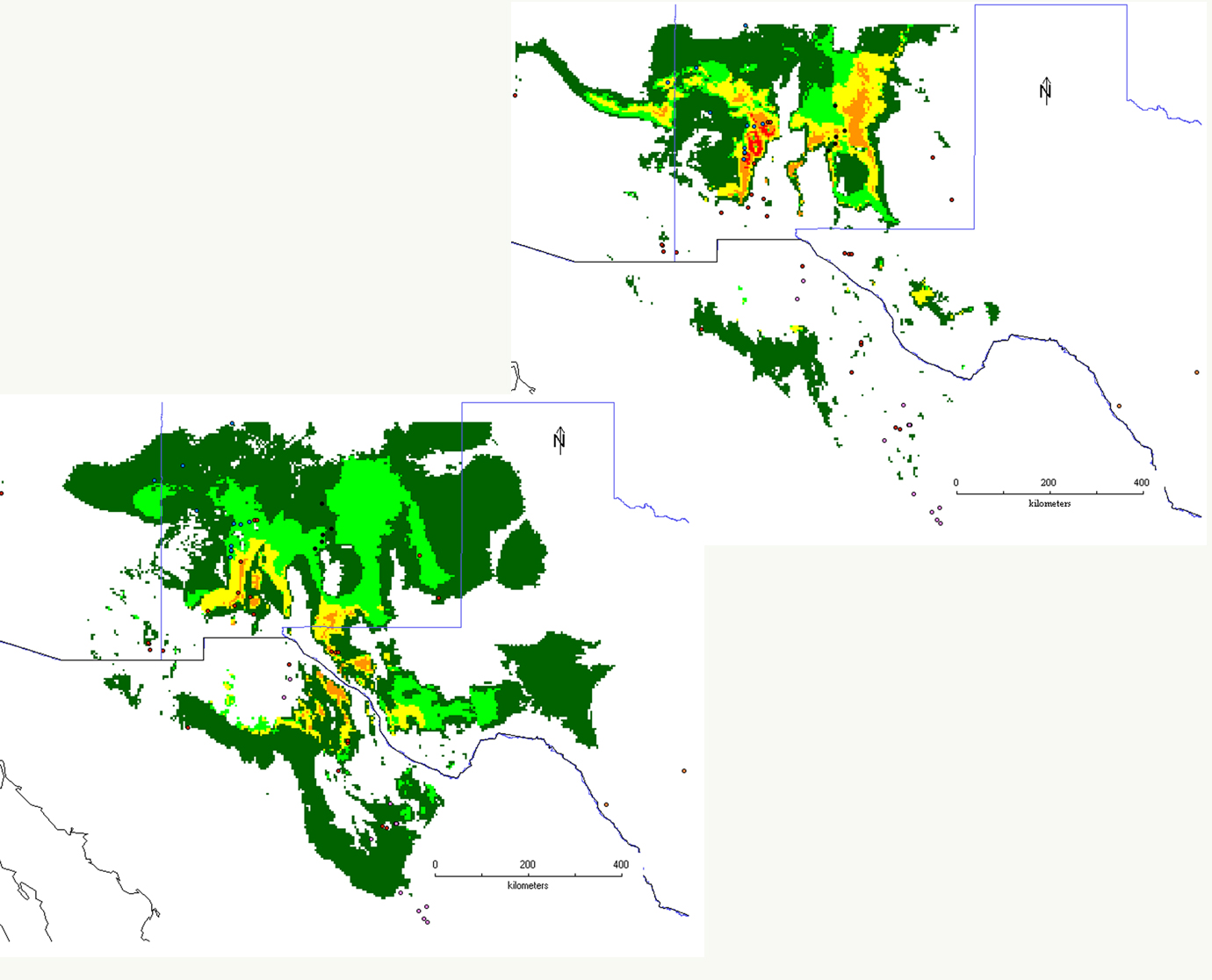
H. maculata from the Palencino Mountains, NM.
Holbrookia maculata within the Chihuahuan Desert
Population subdivision is a function of local interactions between the environment and an individual population. Therefore, climatic and local geologic events may have stronger effects on a species genetic structure than more global events such as mountain building and continental drift. Holbrookia maculata is a small large-ranging lizard species that lives throughout Midwest North America. Within the Chihuahuan Desert this species is locally abundant, but lives in pockets throughout the desert. Hypotheses for the Chihuahuan Desert have suggested that a single area south of the Rio Conchos, Mexico was used by xerically adapted species as a refugium. Alternatively, it has been hypothesized that a large Pleistocene lake which formed at the end of the Pliocene/beginning of the Pleistocene throughout the Chihuahuan Desert, which may suggest more that one refugia for the Chihuahuan Desert during the Pleistocene. The formation of this lake was a result of local climatic shifts within the Chihuahuan Desert that increased the Upper Rio Grande effluent and the original basin-shaped topology of the central Chihuahuan Desert. Preliminary mtDNA data suggest that multiple refugia were formed in late Pliocene/ early Pleistocene and persisted to the Holocene. We are in the process of collecting nDNA intron regions to further test this hypothesis.

